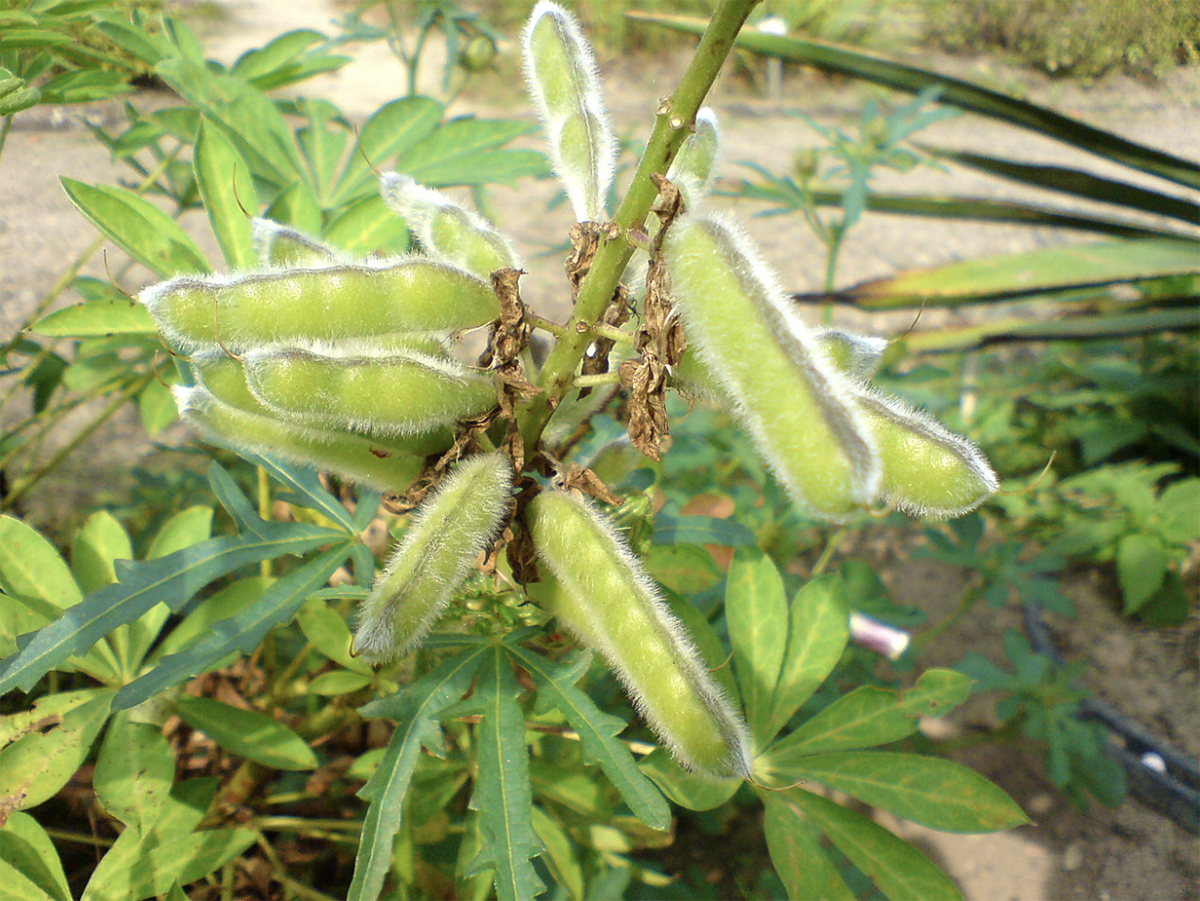August 22, 2023
Lupins pack the most protein out of all pulses but a bitterness common in their seeds has made them less marketable. A new genetic breakthrough means that could be about to change.


Researchers in the UK and Europe have identified the gene responsible for making lupin beans sweeter – paving the way for pulse farmers to engineer more market-friendly strains.
Lupins are unique among pulses for their extremely high-protein levels – around 36g of protein per 100g – which means a tastier, more accessible lupin could an exciting new protein alternative for the plant-based industry.
The drawback of lupins is that many strains accumulate levels of bitter alkaloids which make them unpleasant or too toxic to eat. White lupins are generally sweeter, but narrow-leaf lupins have become the most common lupin grown for consumption due to reported difficulties maintaining sweetness in white lupins.
Fernando Geu-Flores and Davide Mancinotti are plant biochemists from the University of Copenhagen researching the genetic causes of alkaloid accumulation in yellow, white, and narrow leaf lupins (the most commonly grown variety in Australia). Once they had identified the gene responsible for excess alkaloid production, the research team collaborated with Traitomic, a Norwegian molecular genetics and breeding company who, now armed with the knowledge of the gene, were able to search through vast numbers of white lupin plants to find varieties that had naturally mutated without the 'bitterness gene'. They have found that the gene creates similar traits across varieties, so it is from the mutated plants of each type that the new, sweeter lupins can be grown.
However, it is not all sweetness and light. Matthew Nelson, a genetic researcher involved in the project, wrote in an article on Phys.org, that engineering sweet white lupins has its obstacles: "In practice, growing sweet white lupin can be a bit tricky," says Nelson. "There are several different strains that have low alkaloid genes, and if these strains cross pollinate, the result can be bitter lupin plants once again."
Another potential stumbling block for producers is the disease lupin anthracnose, which has proved problematic for Australian growers in the past. Also, lower alkaloid strains of lupins have previously shown evidence of yielding smaller crops.
Currently lupins are mostly used globally for animal feed, but the potential for their use as a food and as an ingredient is significant. Speaking to Food Navigator last week, Kathy La Macchia, General Manager of the Grains and Legumes Nutrition council, suggested that if textural issues and bitter tasting lupins could be resolved, we could be "onto a new protein powerhouse for the plant-based ingredient market.”
The bean has already been popular with certain plant-based manufacturers. For example, in conversation with the GPC last year, Chilean plant-based giant NotCo’s head of research explained that the company had successfully used lupin beans as an ingredient in their foods.
Australia is currently the largest producer of lupin beans globally by some distance, producing around 958,000 MT in 2022 (around 85% of the global total) and 757,000 MT in 2023, with exports sent mostly to the Netherlands and Korea. The closest second producer is Poland, producing around 220,000 MT in 2021.

One of the biggest potential growth areas for lupins is Europe, where the bean is native and well-adapted to the climate. Upping production of sweeter lupins could also prove to be a way of reducing the continent’s dependence on imports of soybeans. The EU has begun promoting lupins as a soy alternative, as around 70% of Europe's plant-based consumption is currently made up of soybeans generally imported from the Americas. This is all done at great cost – a cost that is passed both to consumers and the environment.
Disclaimer: The opinions or views expressed in this publication are those of the authors or quoted persons. They do not purport to reflect the opinions or views of the Global Pulse Confederation or its members.